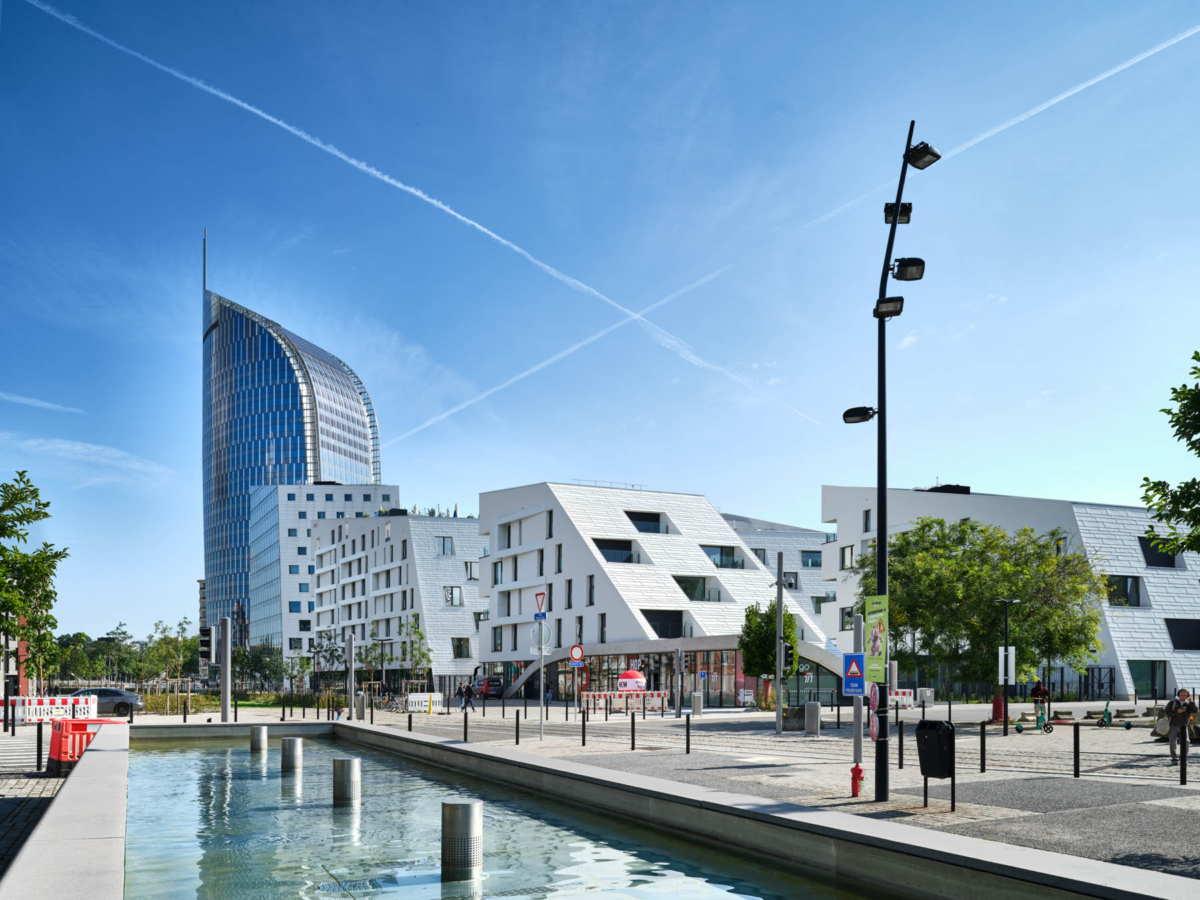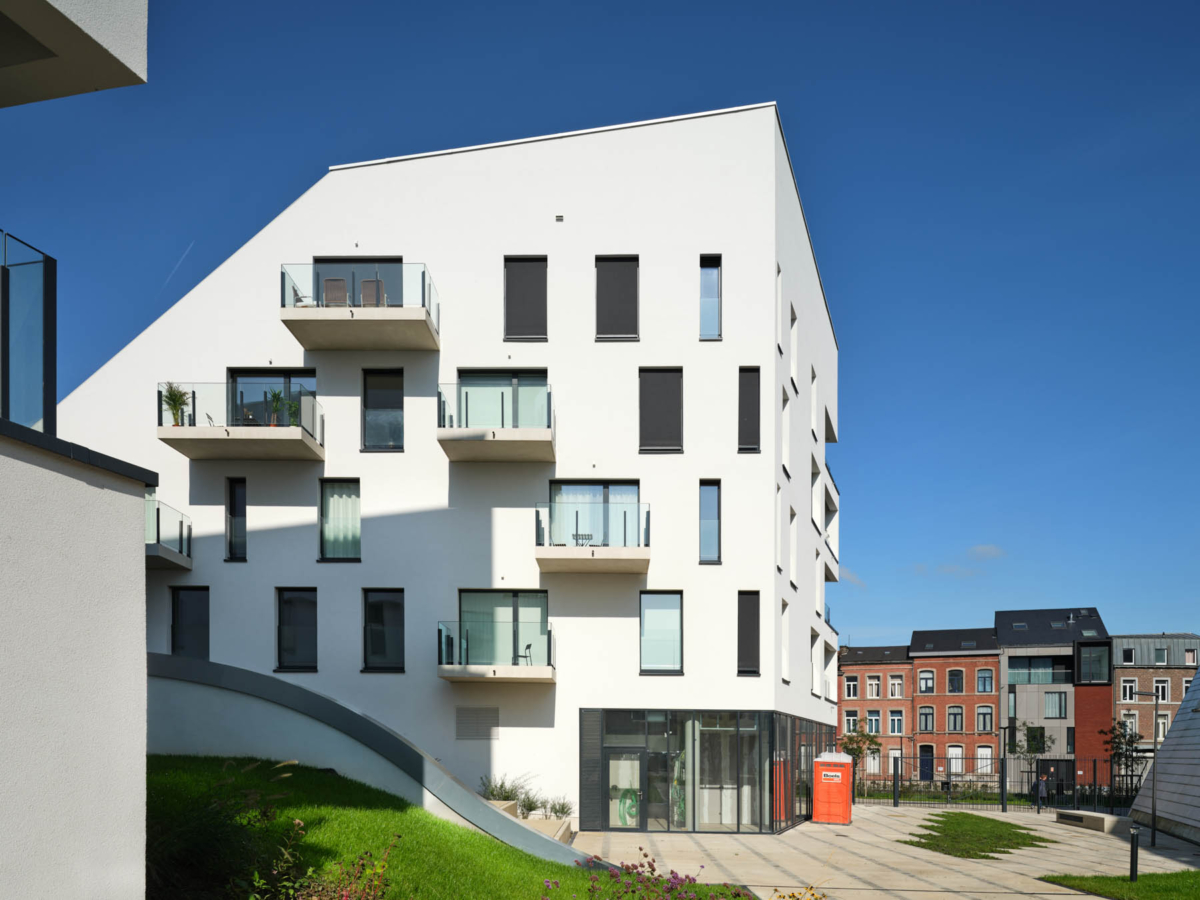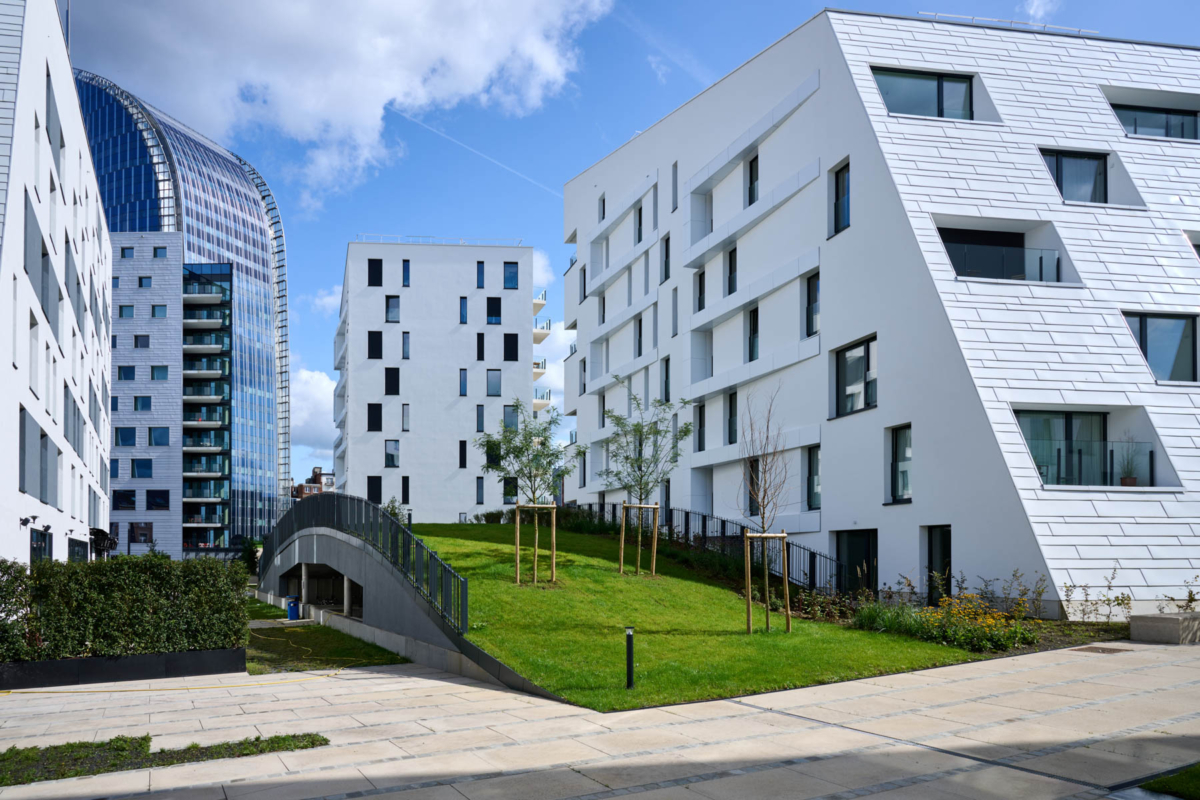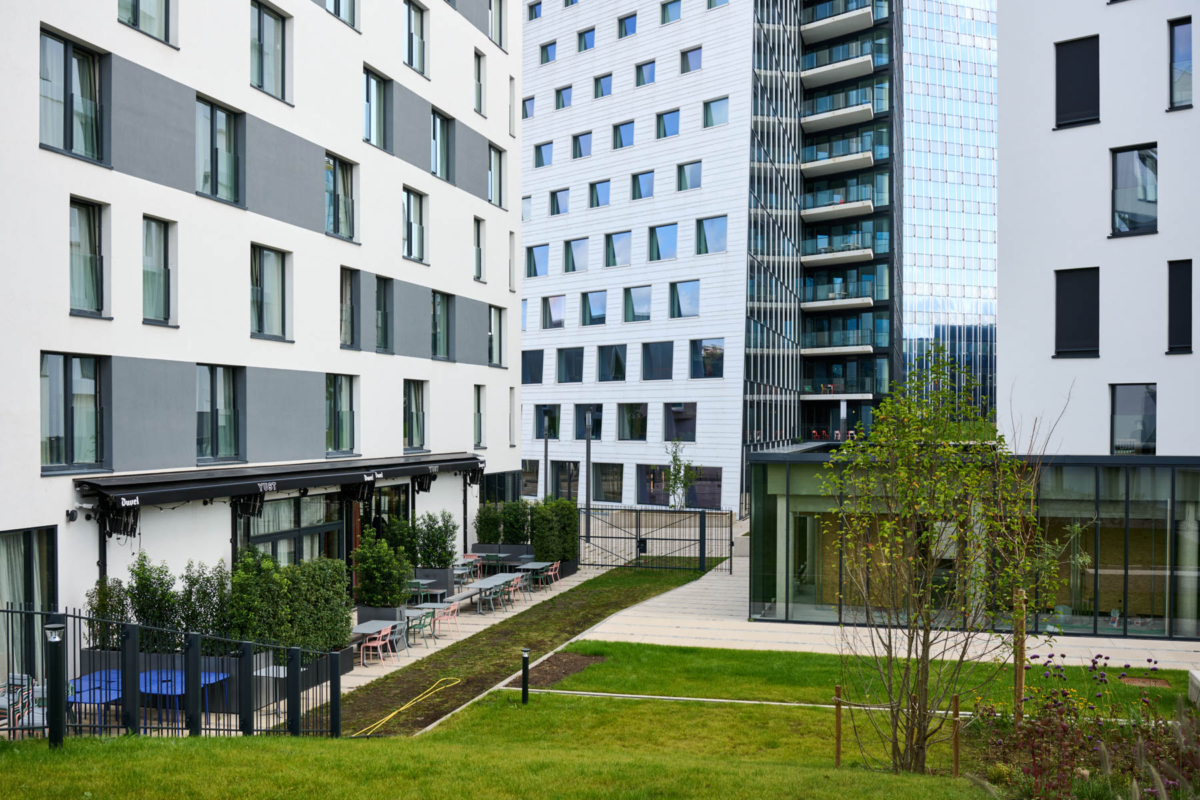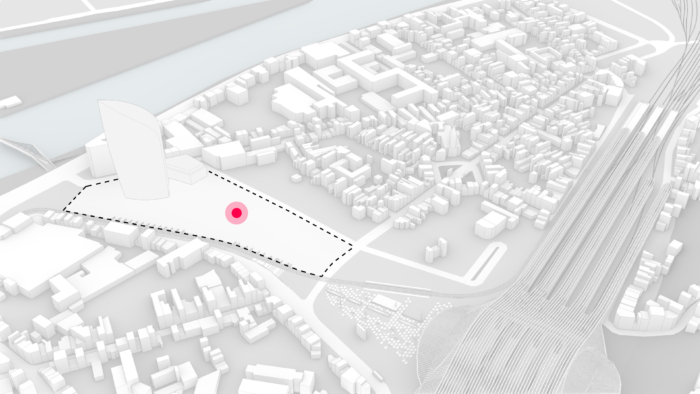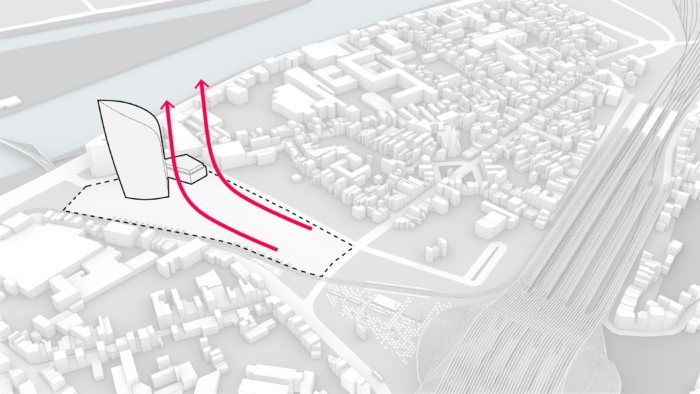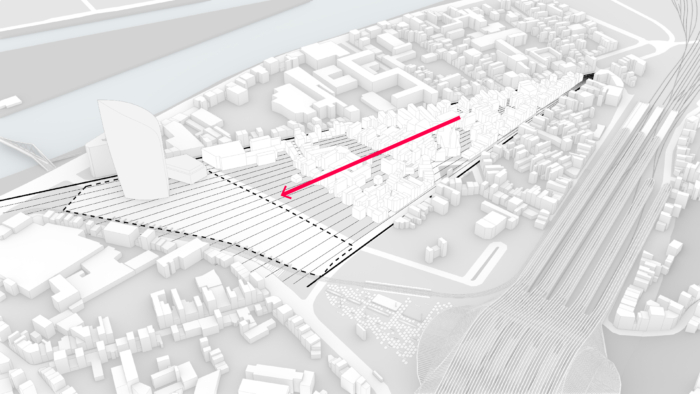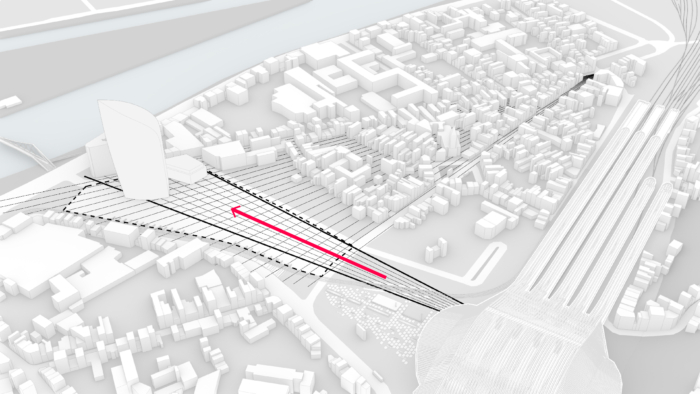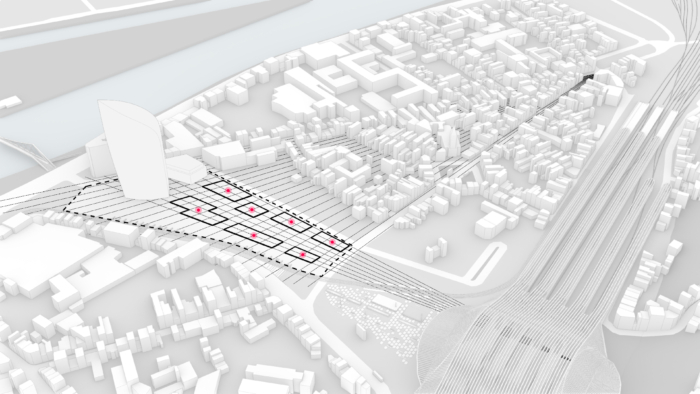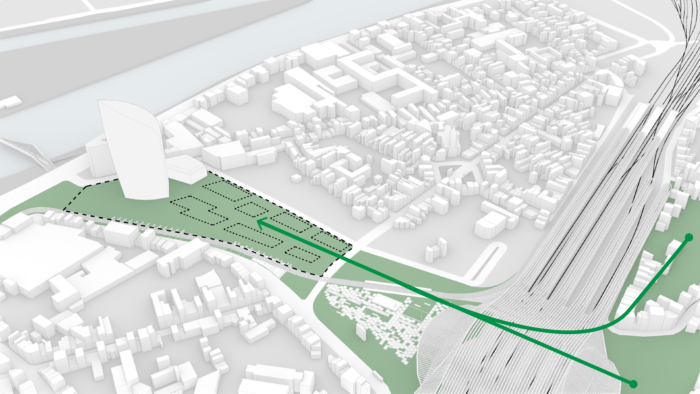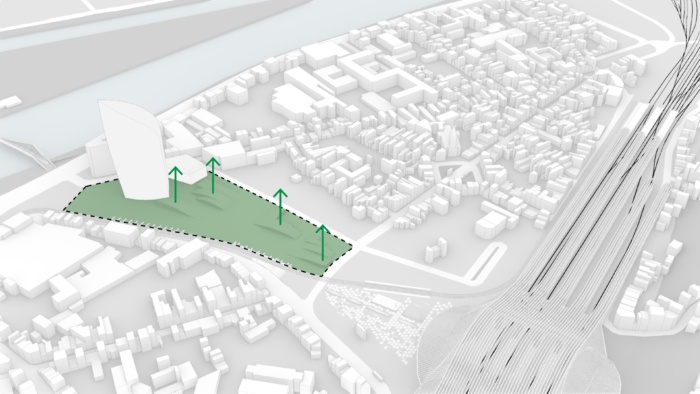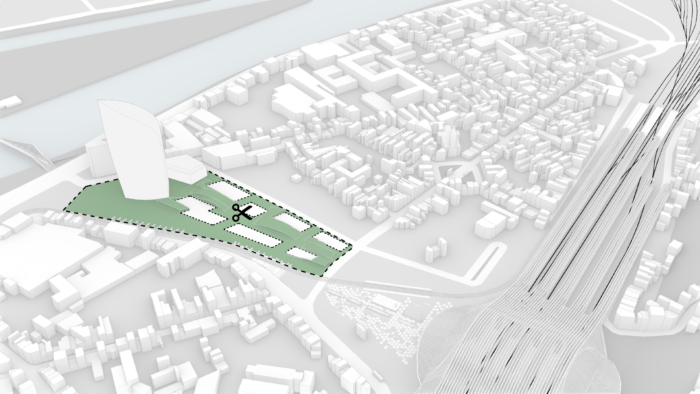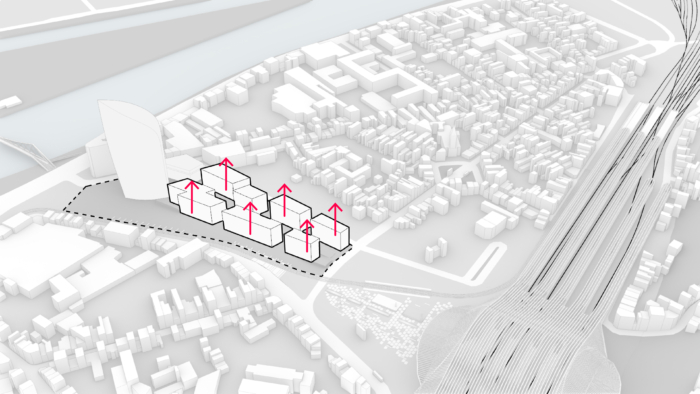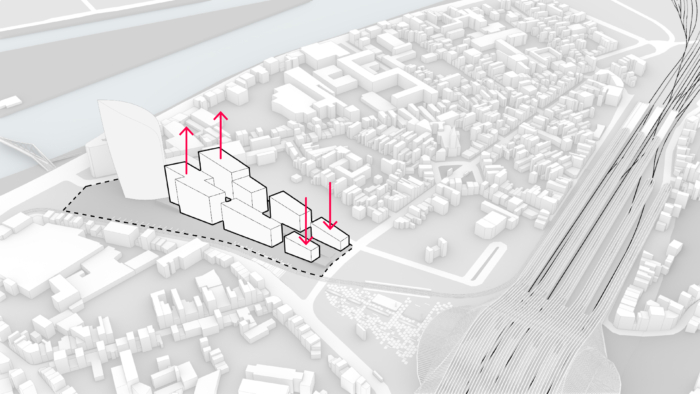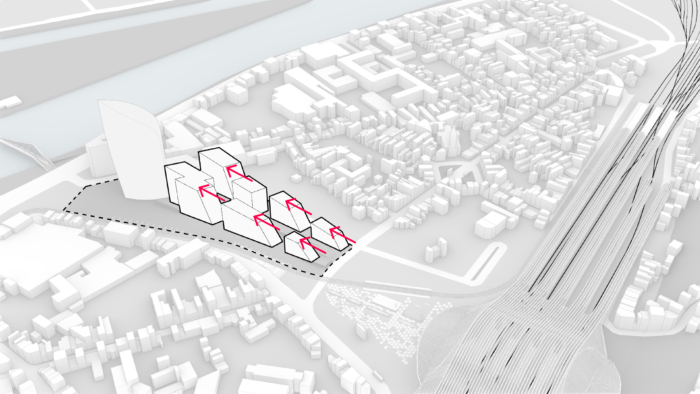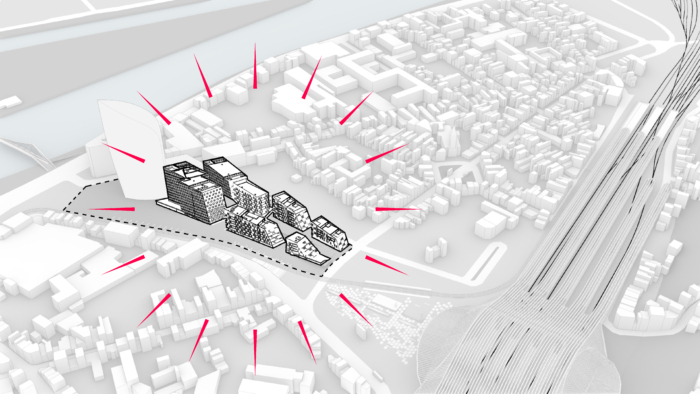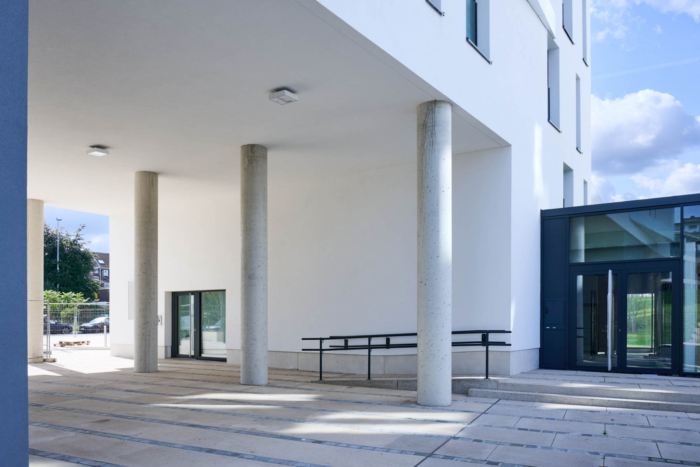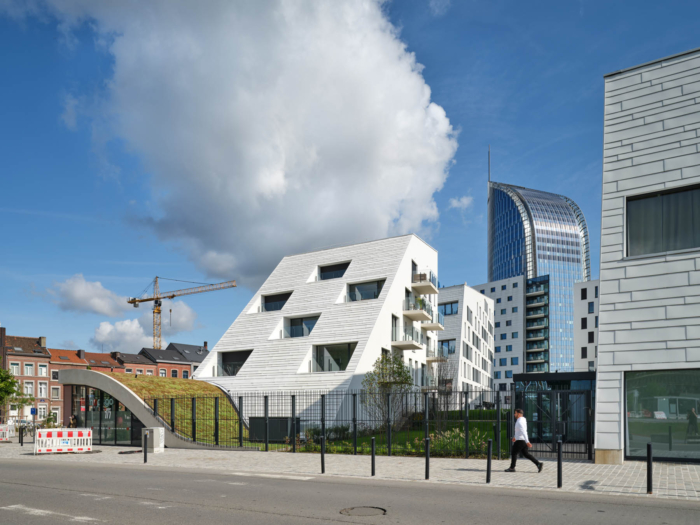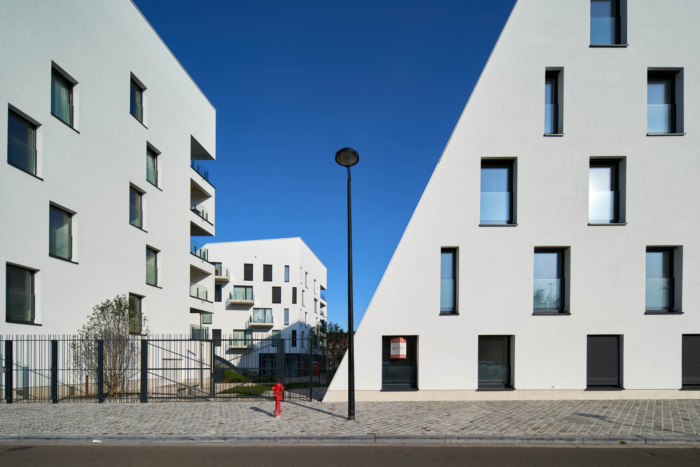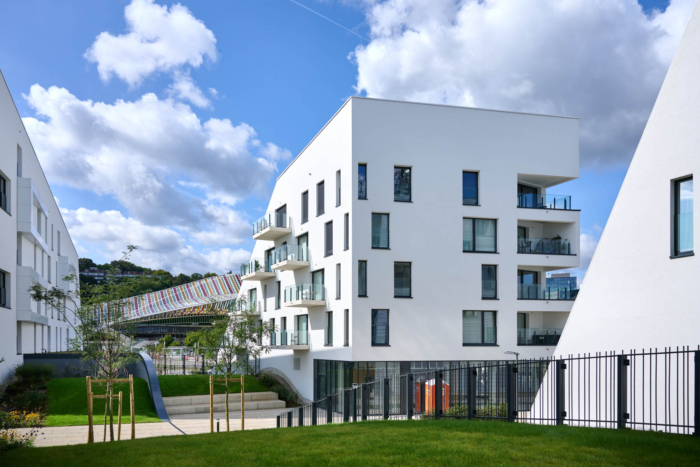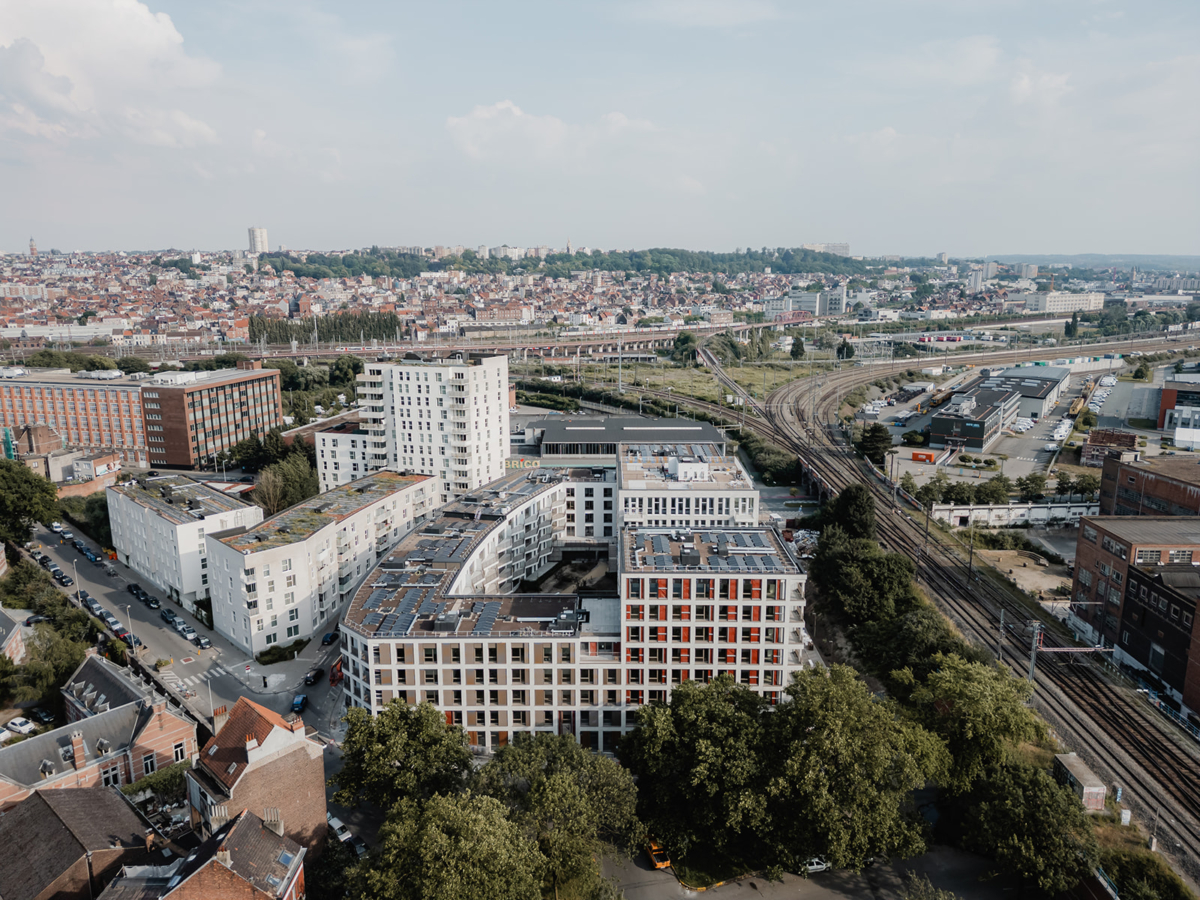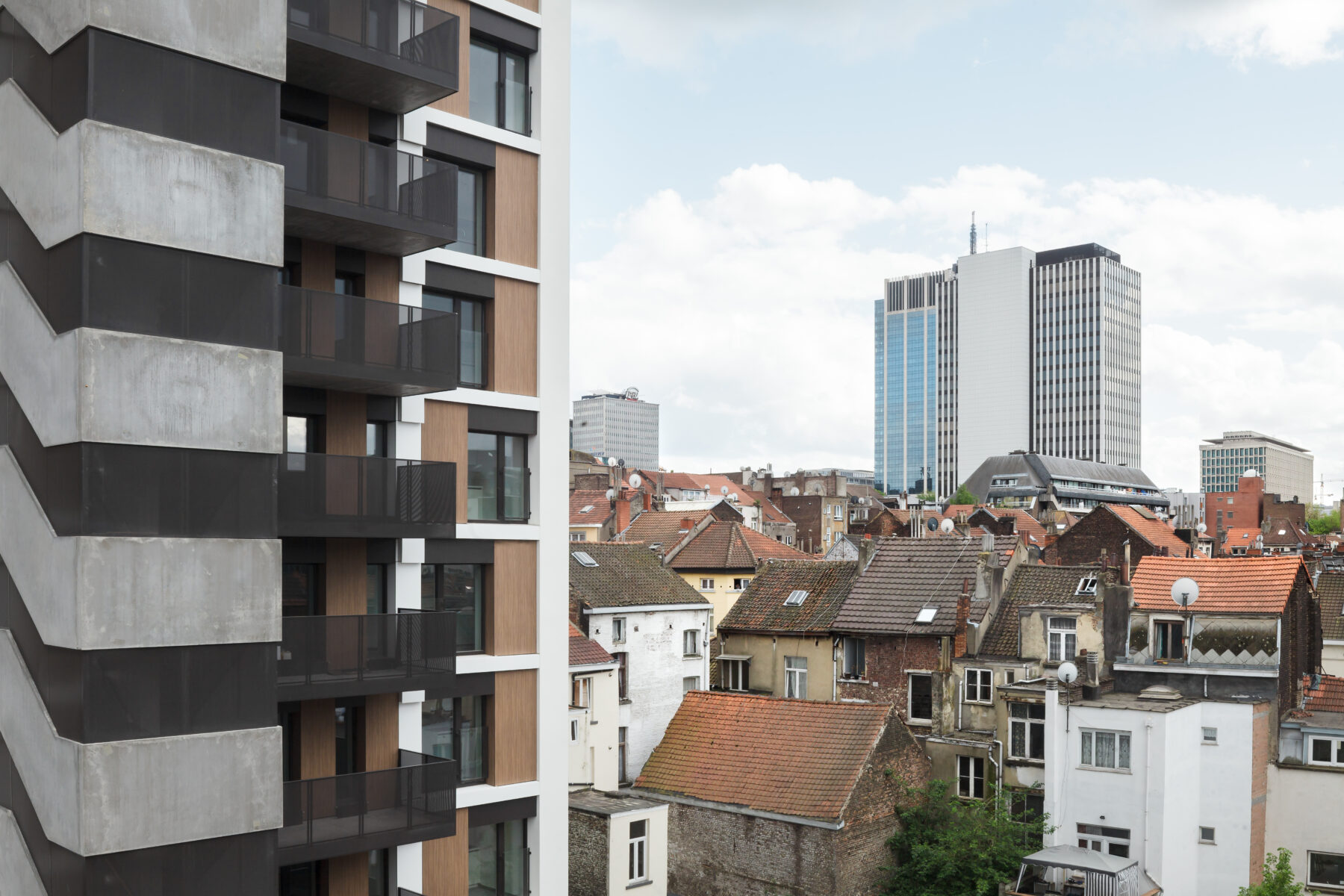We didn’t answer with an icon; we answered with an ecosystem. The design reinterprets the site’s historical parcel structure into a checkerboard grid that weaves together housing, co-living, offices, a nursery, coworking, and active ground-floor functions like cafés and mobility hubs. Volumes scale up gradually, responding to the incline from Cointe hill to the Meuse. The composition creates a porous urban landscape where public and private spaces interlock through a network of small squares, diagonal paths, and collective patios. Green dunes echo the topography of Liège while managing runoff, softening edges, and acting as thermal buffers. The ground floor remains accessible and walkable, linking soft mobility routes with planted zones and courtyards. The architecture makes programme legible: residential volumes read as domestic, with loggias and balconies; office façades expose the grid, tuned to use, sun, and structure. The goal was never to compose objects, but to establish a framework where form follows connection, orientation, and shared purpose.
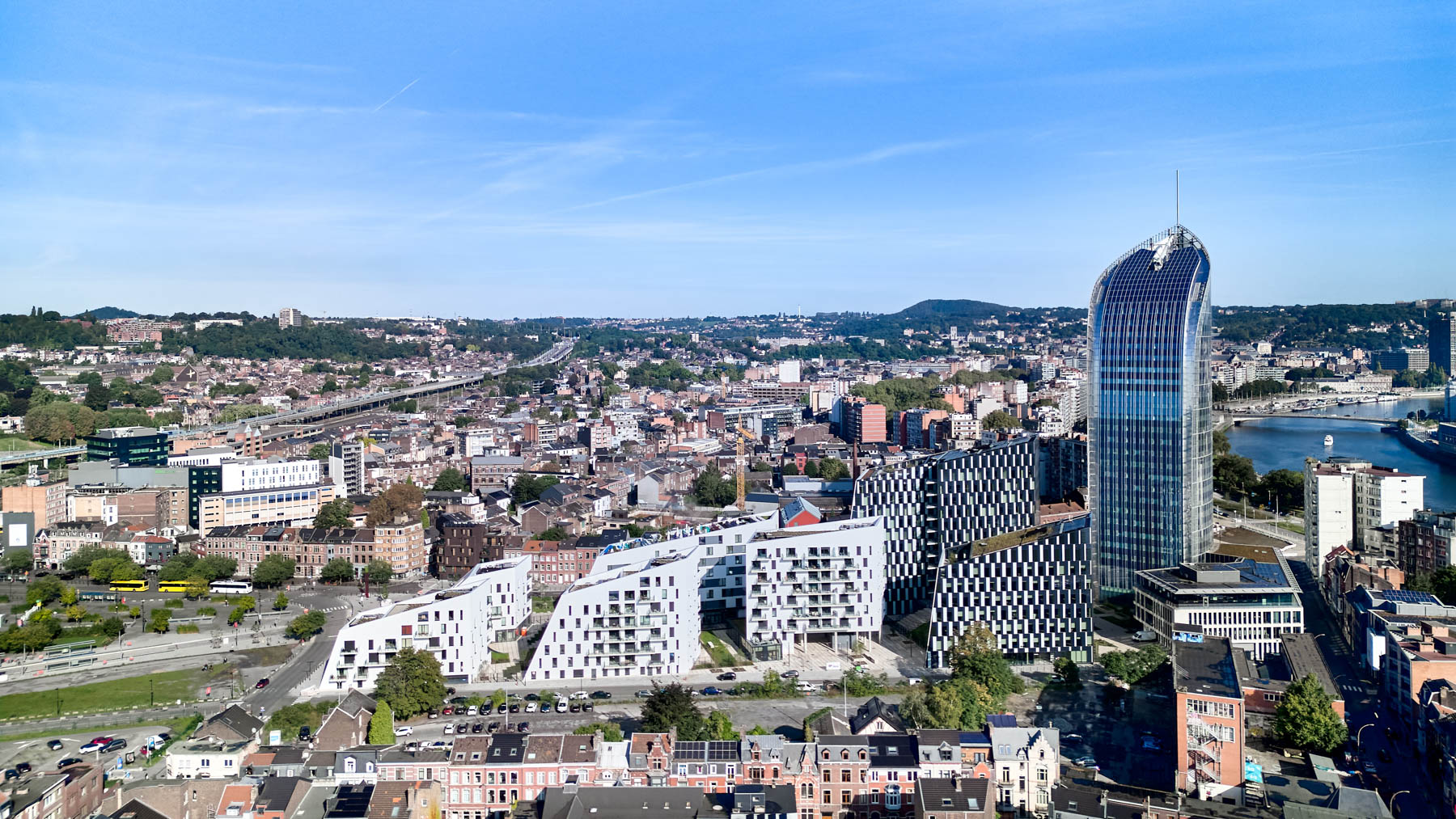
- 2014 - 2024
- Befimmo, Yust, Matexi
- Architecture, Climate Design
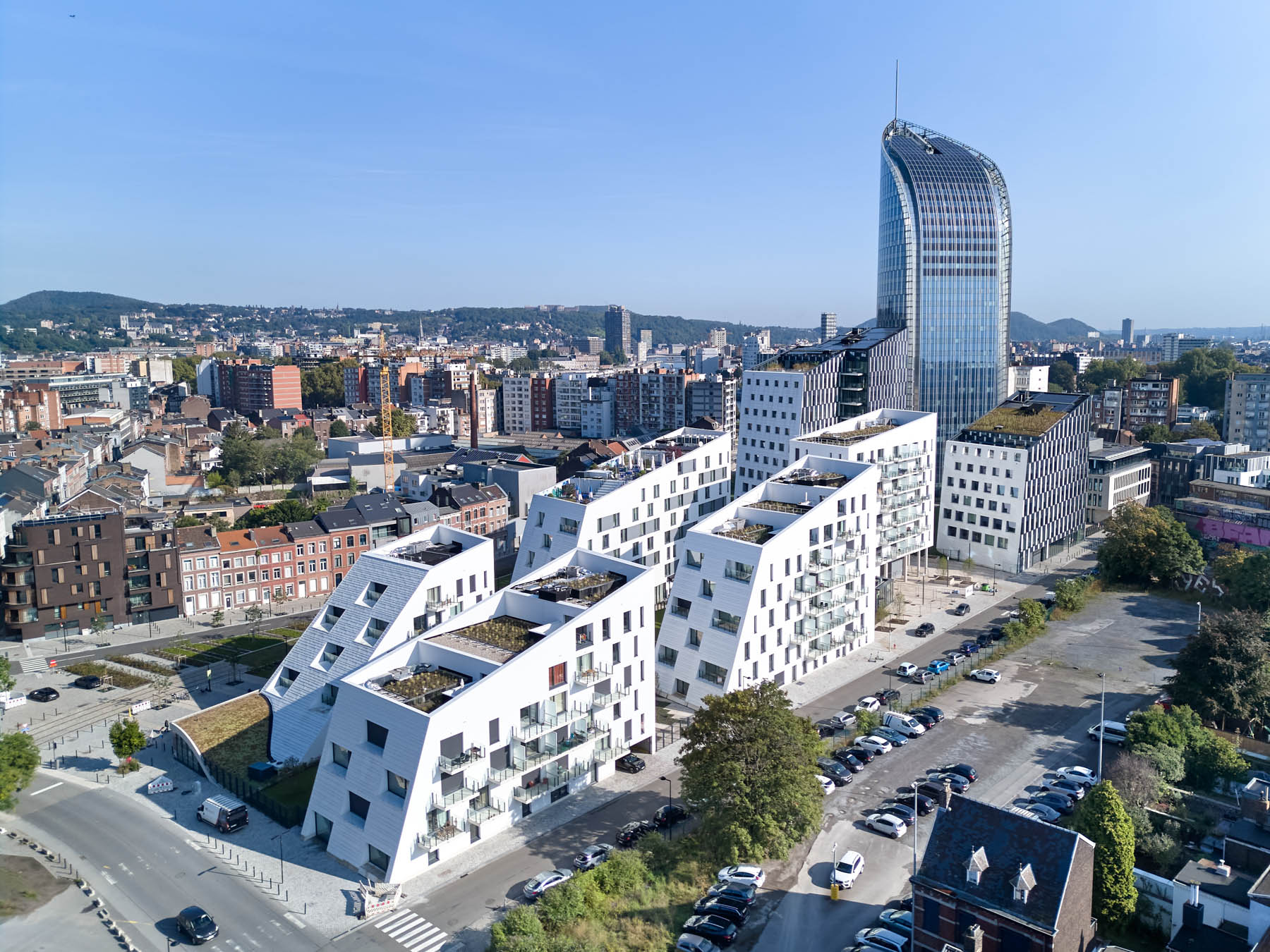
Once part of a dense working-class district, the site was cleared during the redevelopment of the Guillemins area. For years, it remained a residual plot, framed by high-profile architectural statements like Calatrava’s train station, the Finance Tower, and a commercial project by Ron Arad. The site’s topography, between Cointe hill and the Meuse valley, amplified the contrast in scales. The arrival of the tram line added urgency to reweave the urban fabric. But the question wasn’t how to add another icon. It was how to reconnect. Inspired by the site’s historic parcel structure, the brief called for a fine-grained mix: housing, offices, co-living, a nursery, coworking, and public space. The challenge: how to turn a fractured site into a regenerative system that engages topography, mobility, and urban life through continuity rather than spectacle?
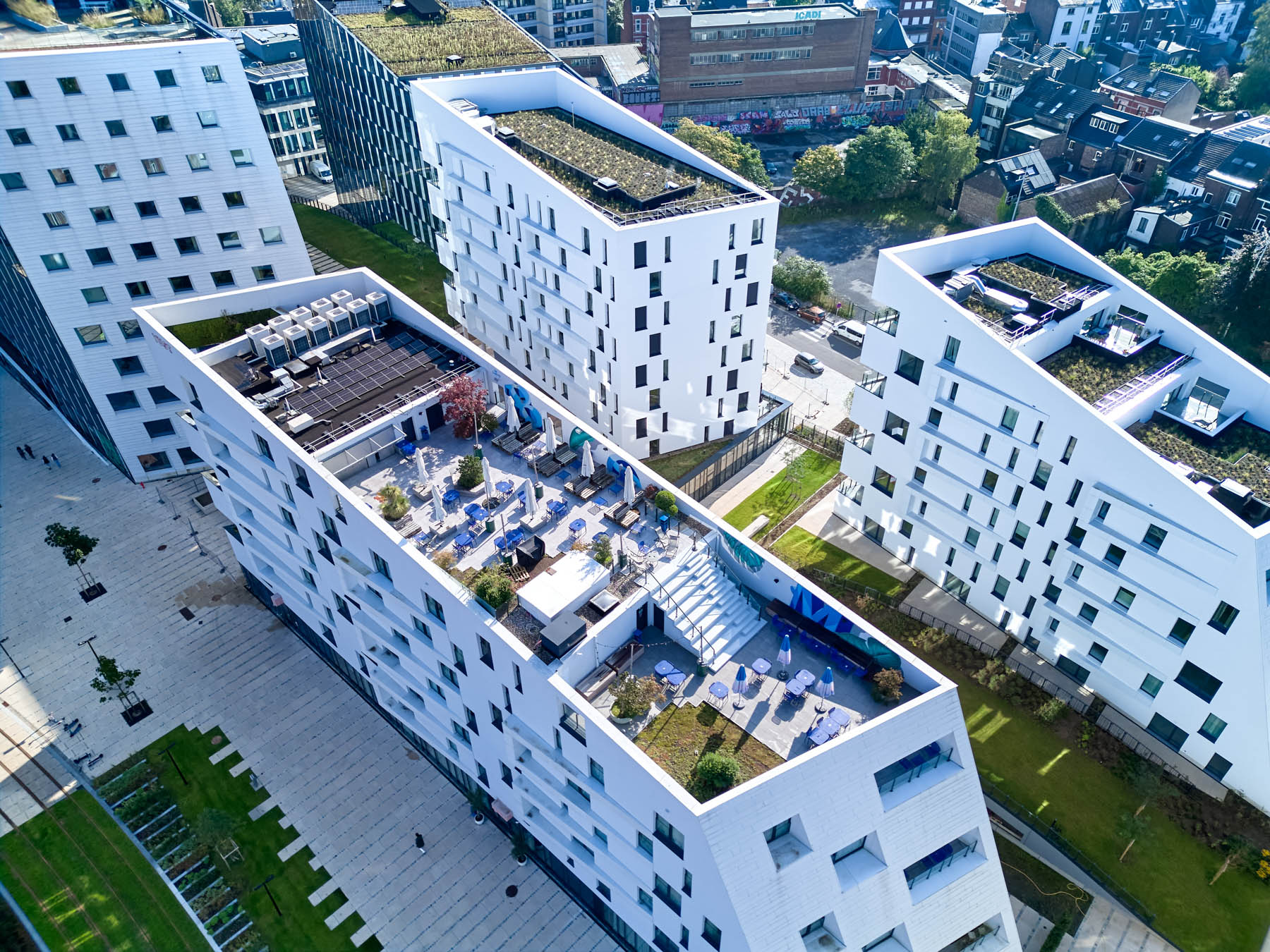
Paradis Express doesn’t compete for attention; it earns its place by working with, rather than against, its context. The project aims to shift the logic of what a mixed-use district can be: not a collection of buildings, but a climate-conscious landscape that grows with its city. Shaded patios, planted slopes and tree-lined paths activate the ground floor and invite shared use throughout the day. Rainwater is absorbed and reused on site through green roofs, permeable surfaces and infiltration zones. A carefully layered vegetation plan, from ground covers to canopy trees, supports biodiversity and strengthens local microclimates. Spaces unfold in gradients: from communal gardens to quiet corners, from public routes to intimate thresholds. Pedestrians and cyclists move fluidly through a network of plazas and planted clearings. The design doesn’t impose, it enables, suggesting how density and ecological sensitivity can coexist. Here, architecture sets the conditions for cooler air, social exchange and urban life that adapts and endures.
An interactive visual window into our planet's
changing climate, based on the most recent
measurements and climate model predictions
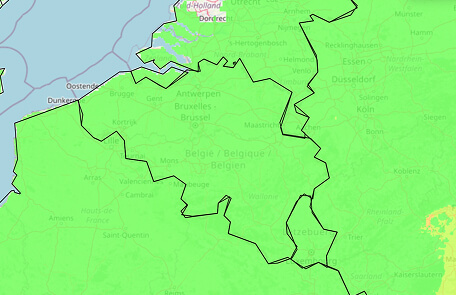
Liège has a temperate oceanic climate (Köppen: Cfb), characterized by mild to cool winters and moderate summers, with no dry season. Rainfall is fairly evenly distributed throughout the year, and temperatures rarely reach extremes. Average summer highs range between 20–25°C (68–77°F), while winter lows typically hover around 0°C (32°F), with occasional frost or light snowfall. The climate is influenced by Atlantic weather patterns, contributing to its frequent cloud cover and humidity.
| Location | Liège, BEL |
| Status | Built |
| Procedure | Competition, 1st Prize |
| Size | 39,295 m² |
| Collaboration | Jaspers-Eyers, BAGreisch, TPF, Lemaire Ingénieurs, Heinz Winter |
| Awards | MIPIM Awards 2016 - Best Futura Project (Winner) European Property Awards - Best Mixed-use Architecture (Winner) |
| Certifications | BREEAM Outstanding Passive House (PMP) |
for longevity.
The ambition: deliver a regenerative, high-density neighborhood nestled between architectural landmarks without simply adding another one. The method: a transcalar composition, tuned to program, performance and long-term adaptability. Each volume rests on a structural grid, allowing for flexible floor plans, future conversion and optimal underground circulation. All buildings meet Passive House and NZEB standards, reducing energy demand by up to 60%. A high-performance envelope, airtight detailing and exterior solar protection ensure thermal comfort without excessive cooling. Mechanical systems include dual-flow ventilation with heat recovery, cogeneration for shared spaces and optional PV to reach net-zero. Water retention is integrated into green roofs and the terrain itself. Every element, from prefabricated concrete to reversible energy systems, is chosen for longevity, disassembly and low lifecycle cost. The result is a quietly high-performing framework for urban life that aims to regenerate well into 2080.
